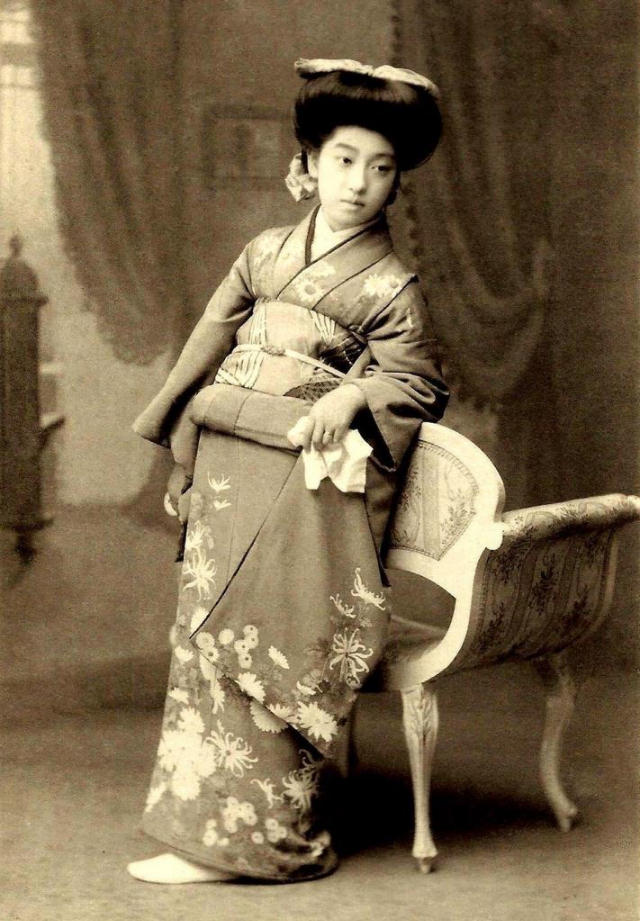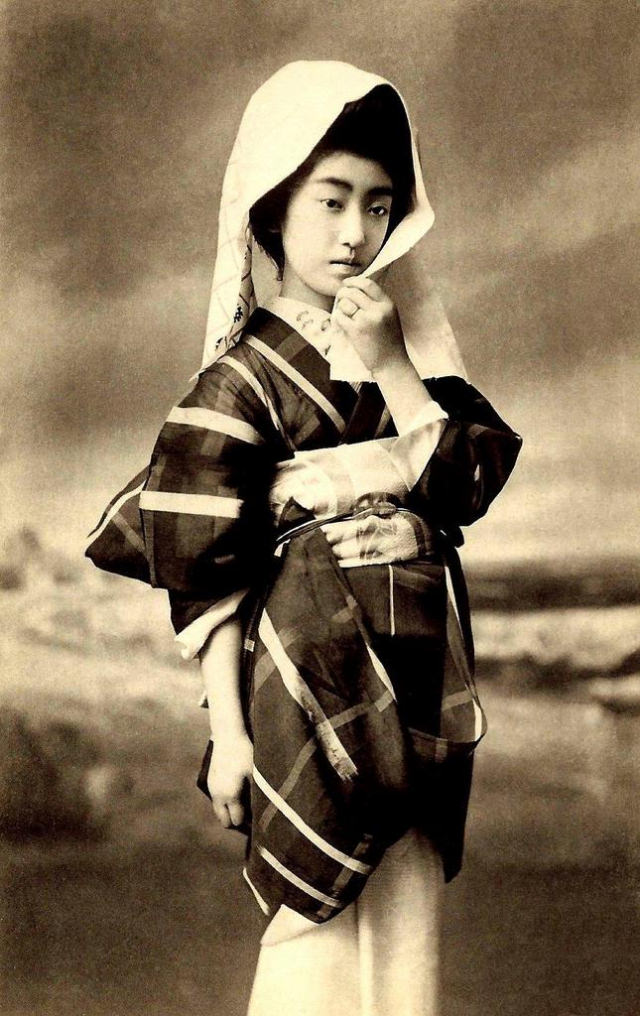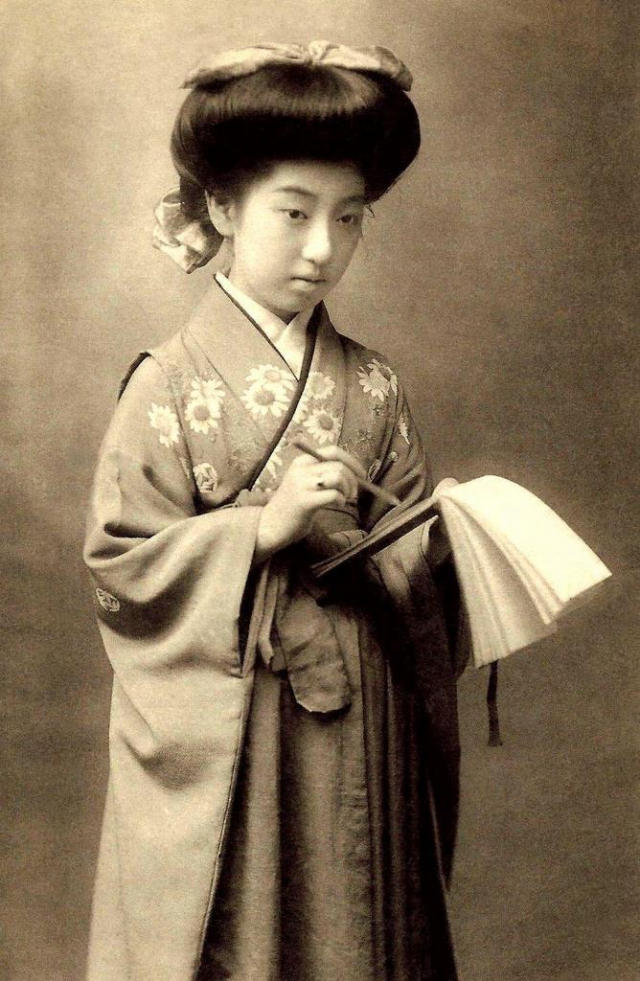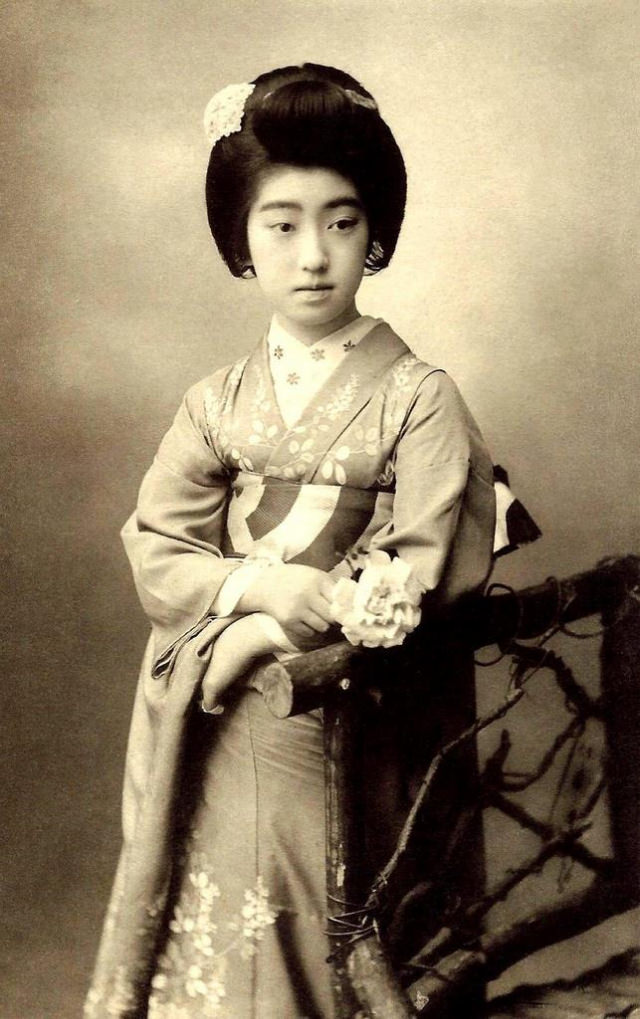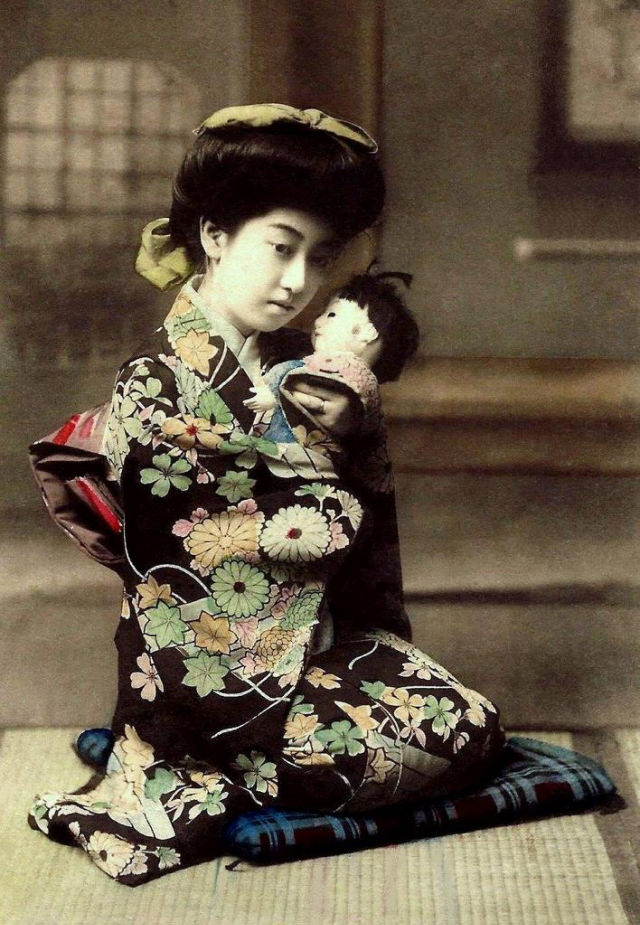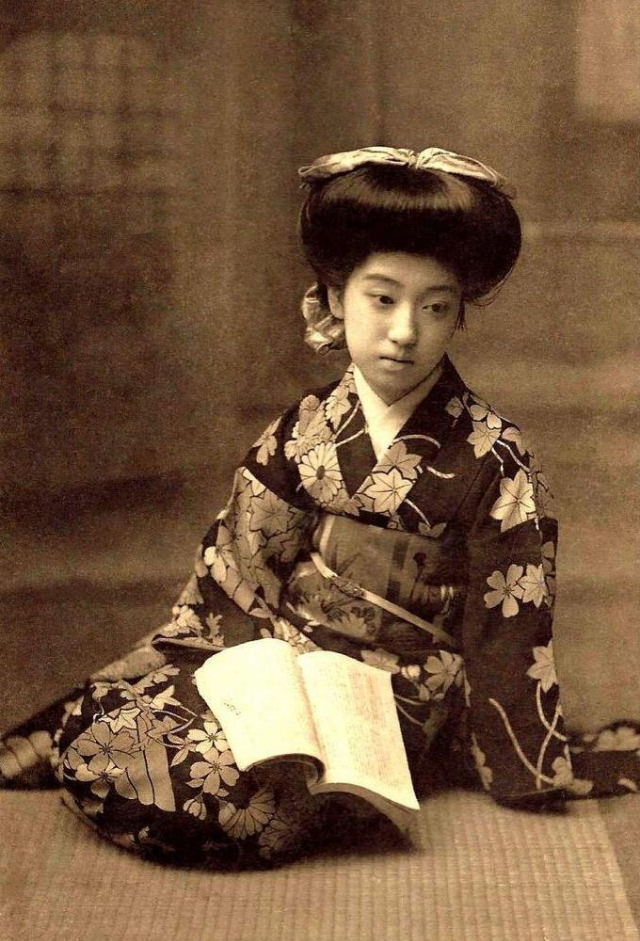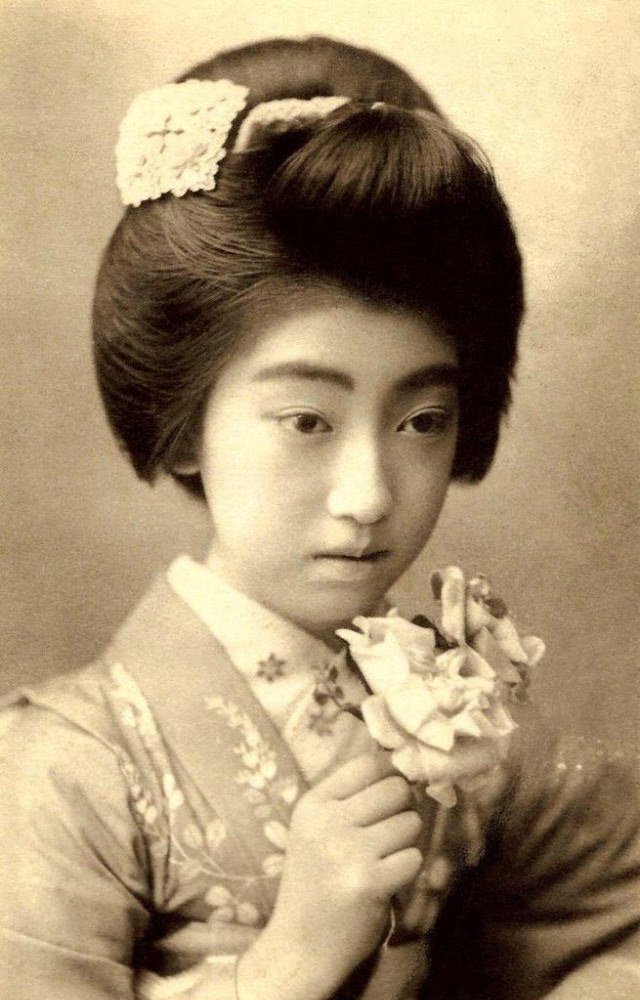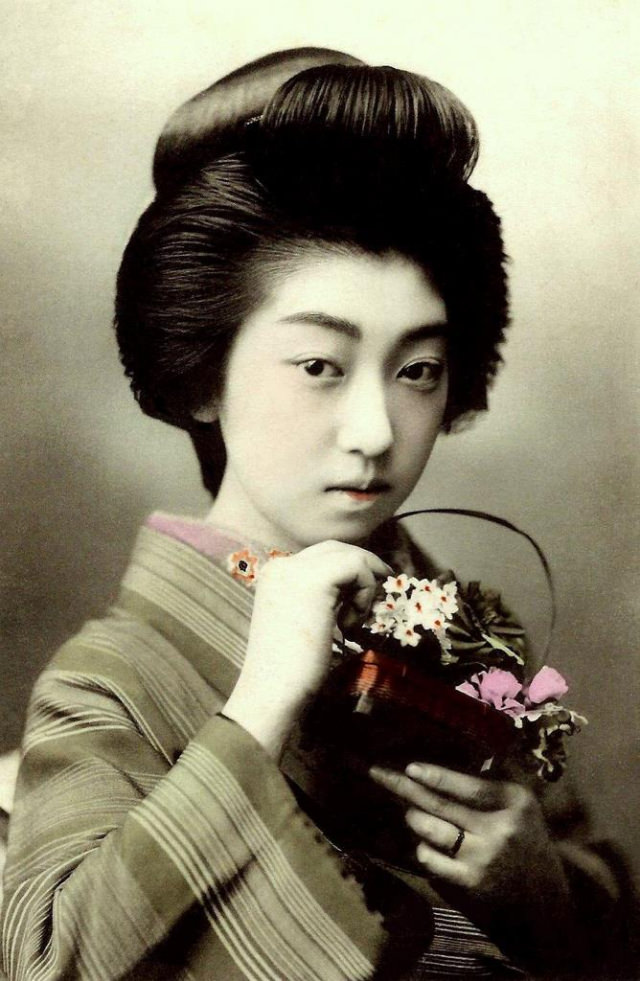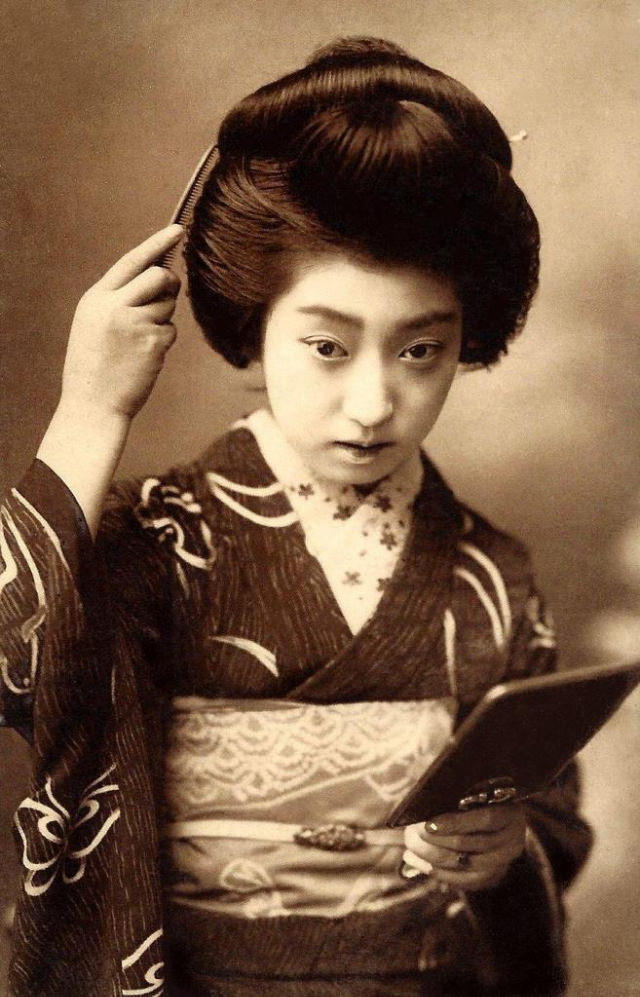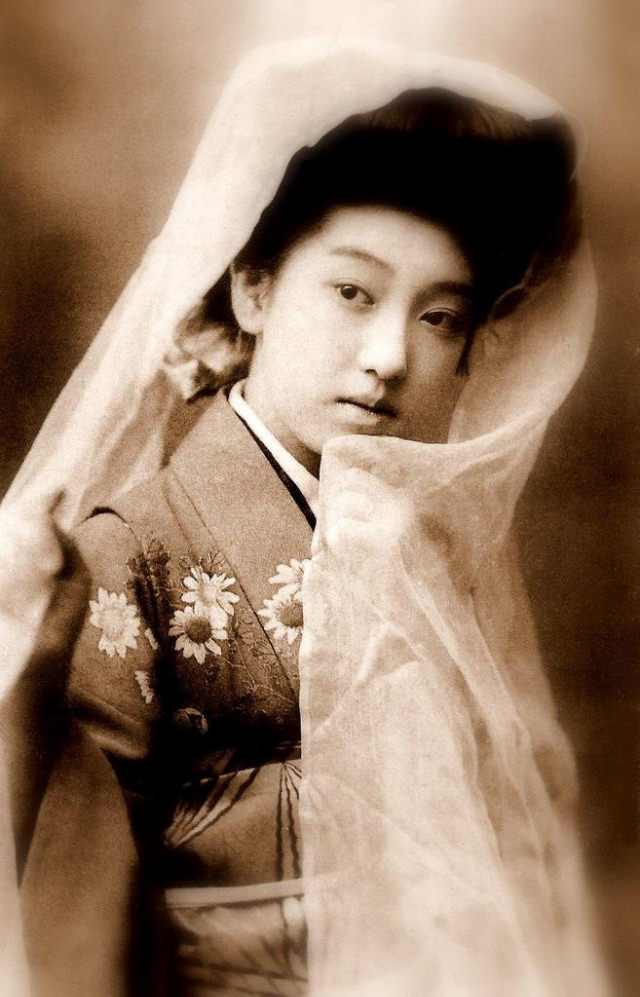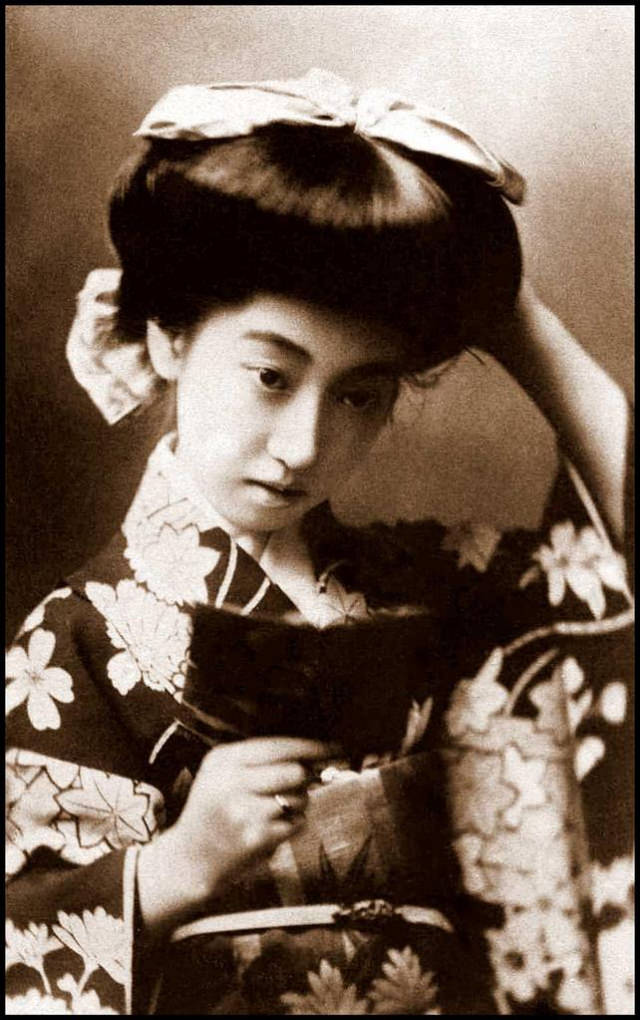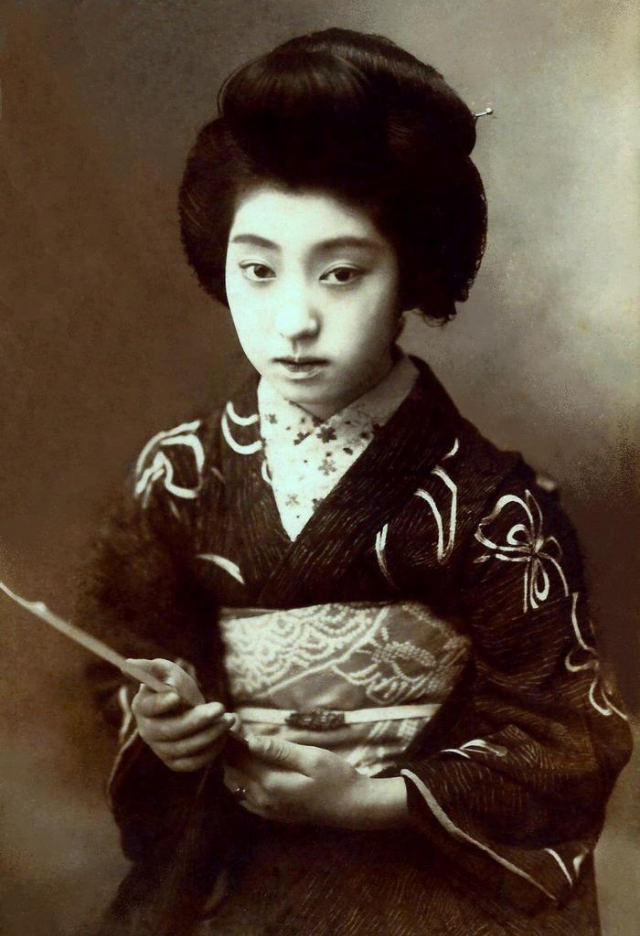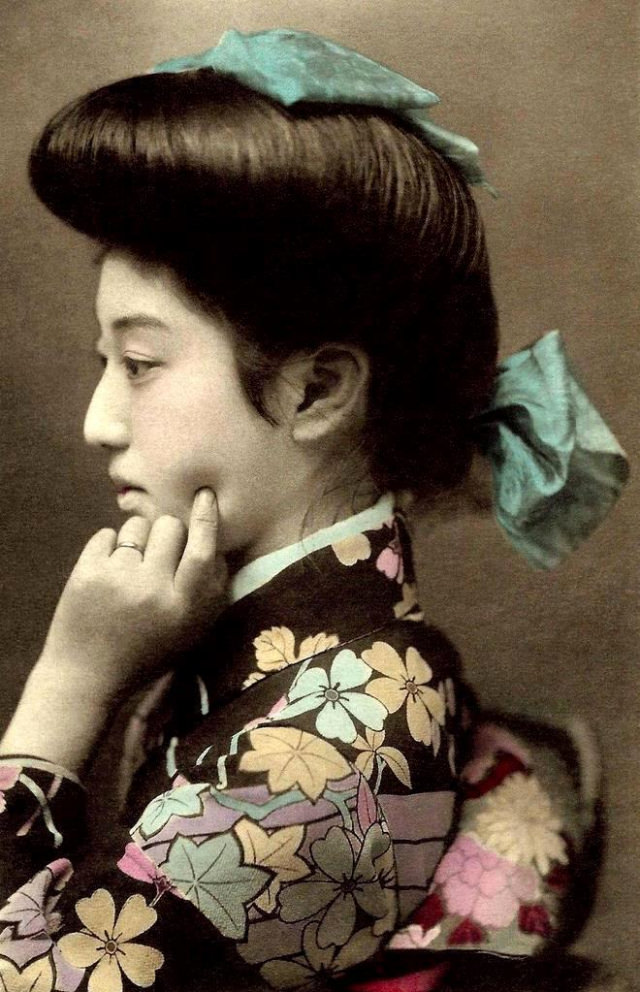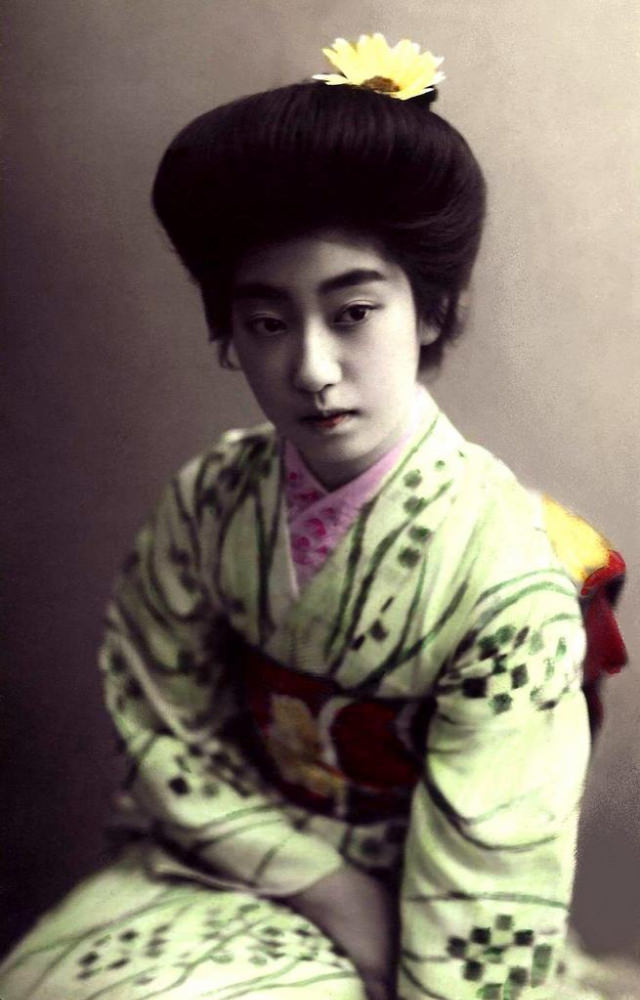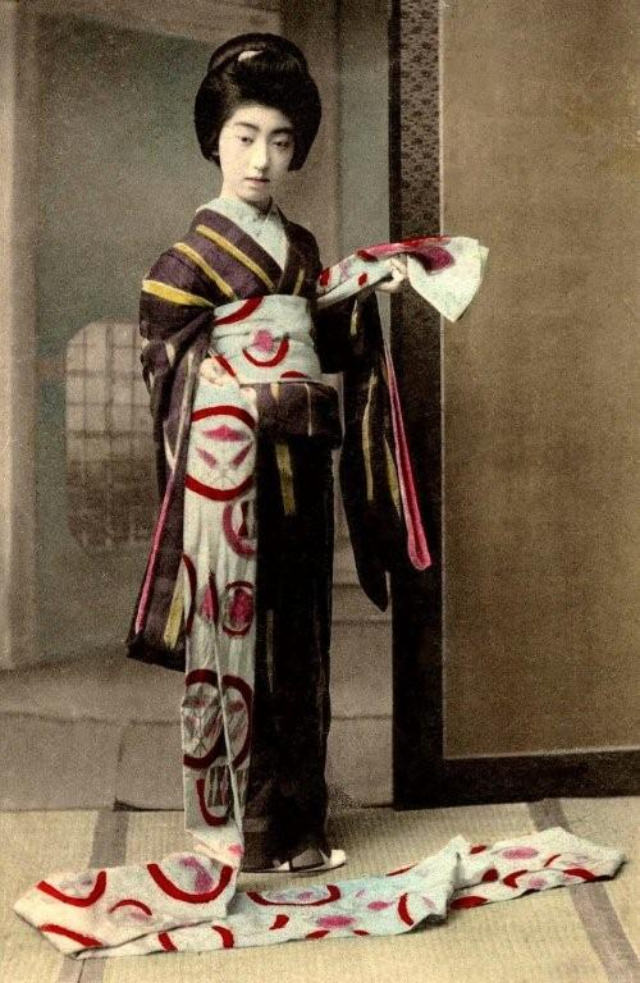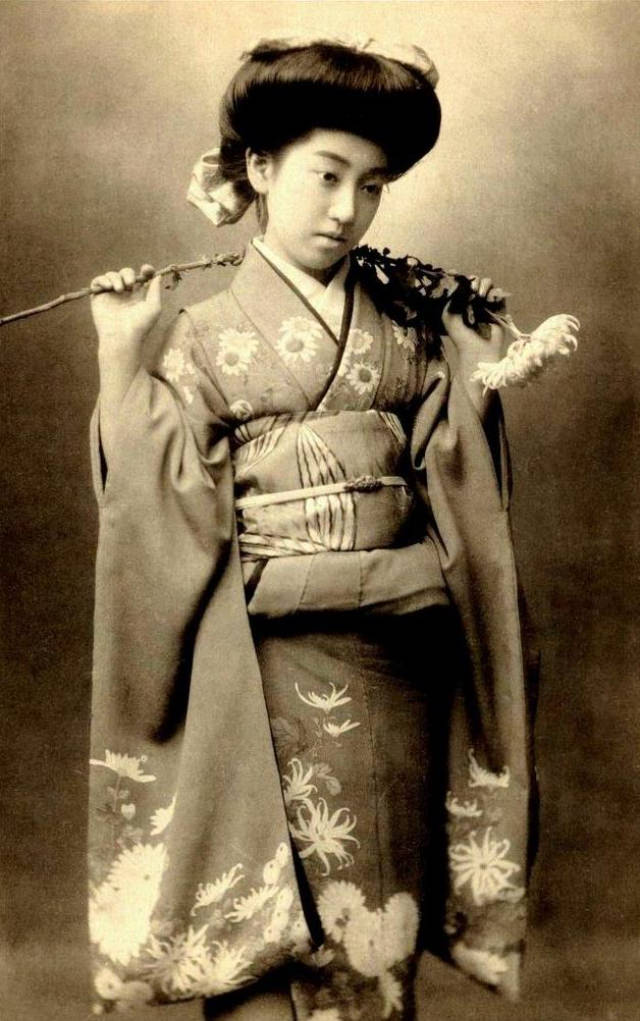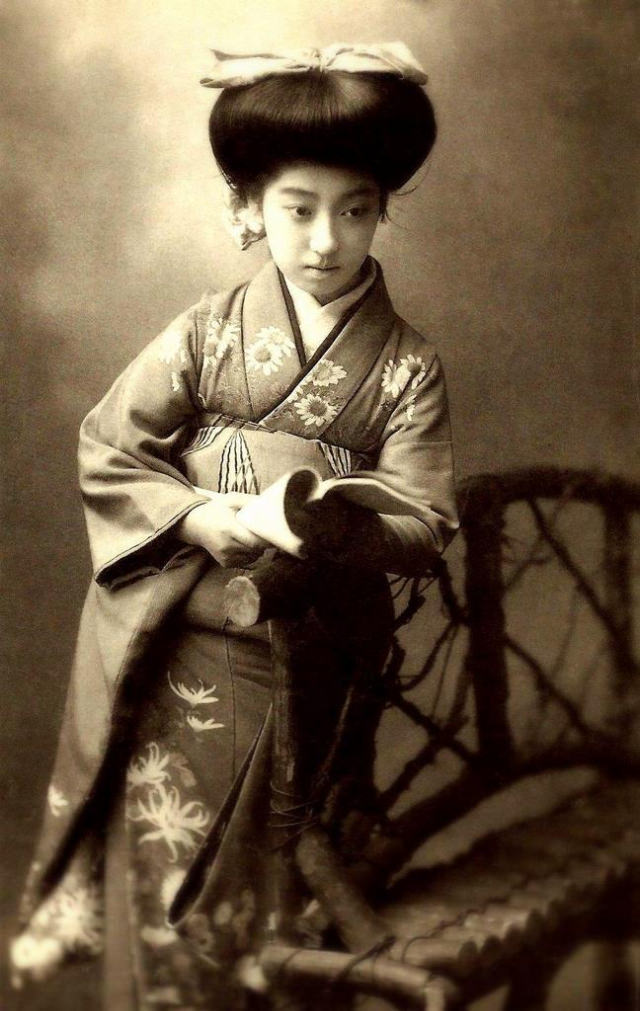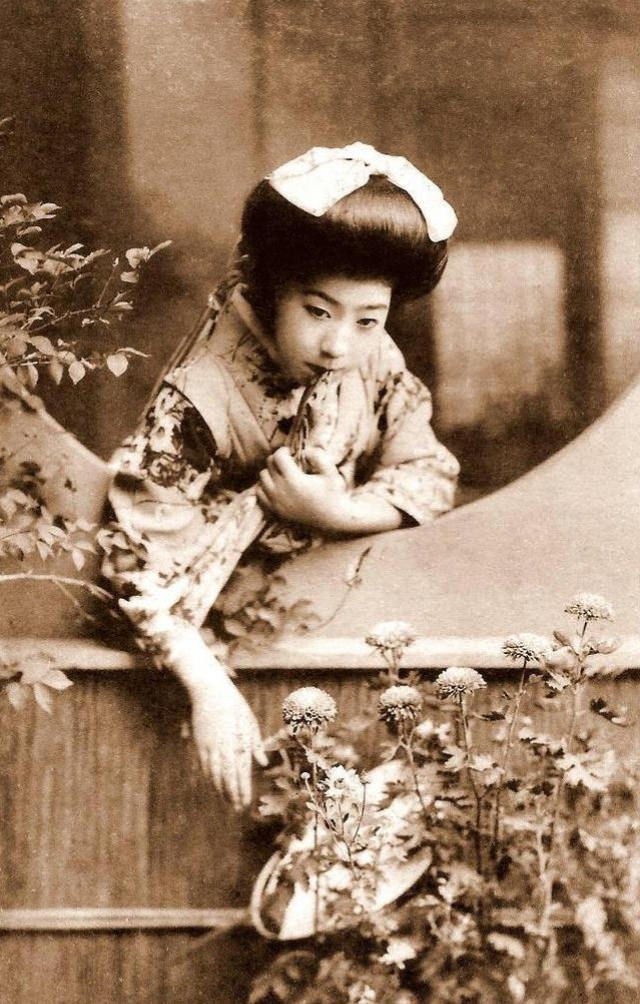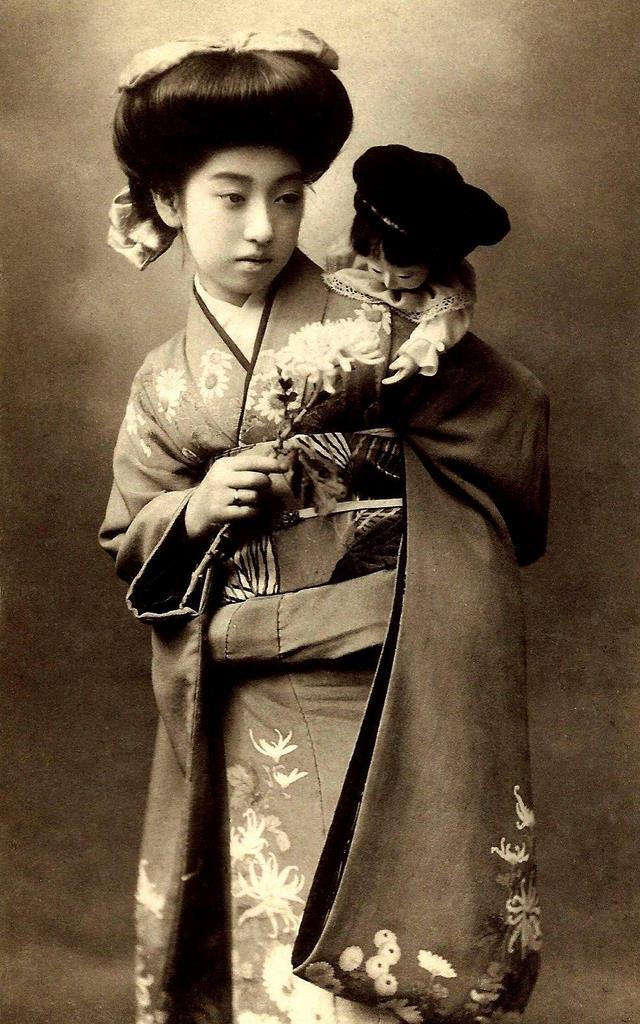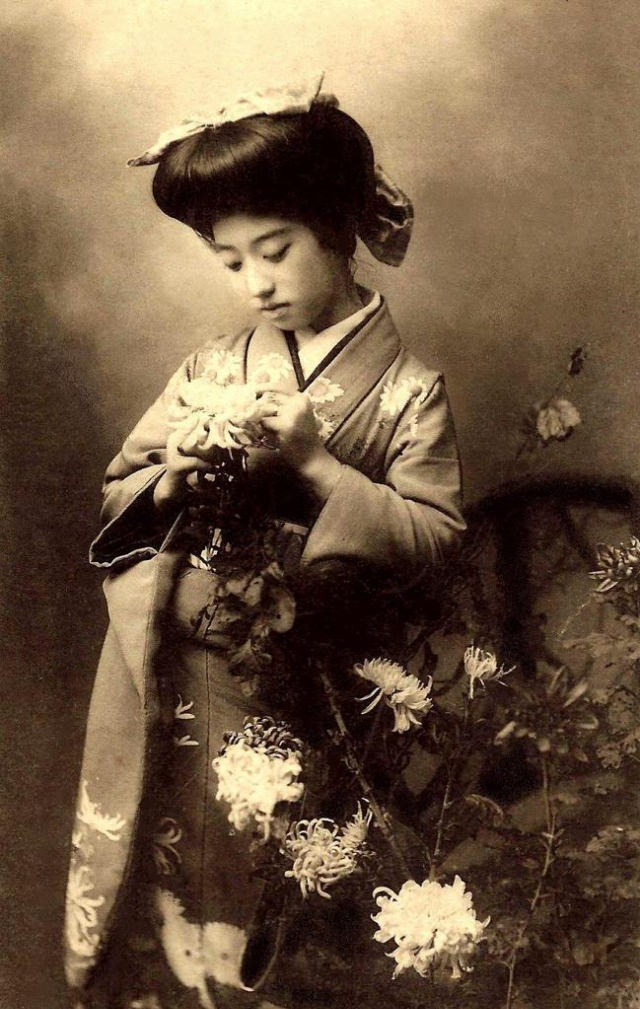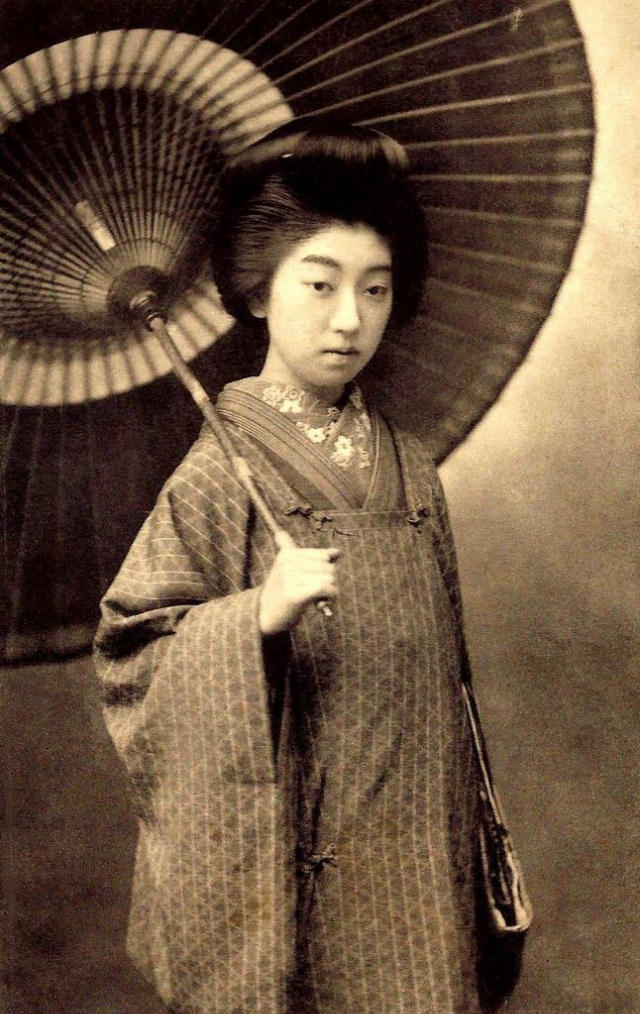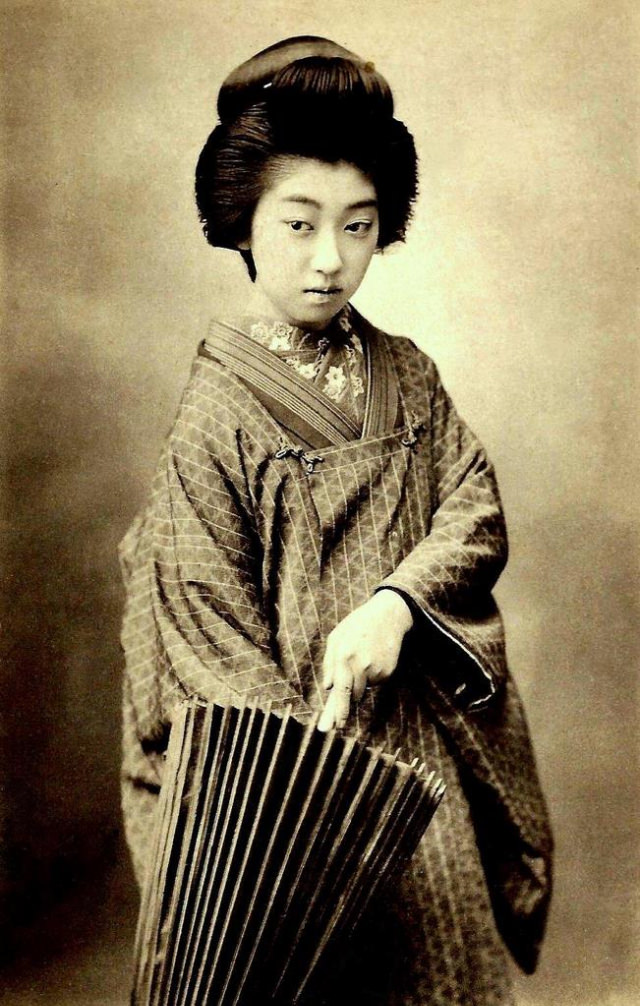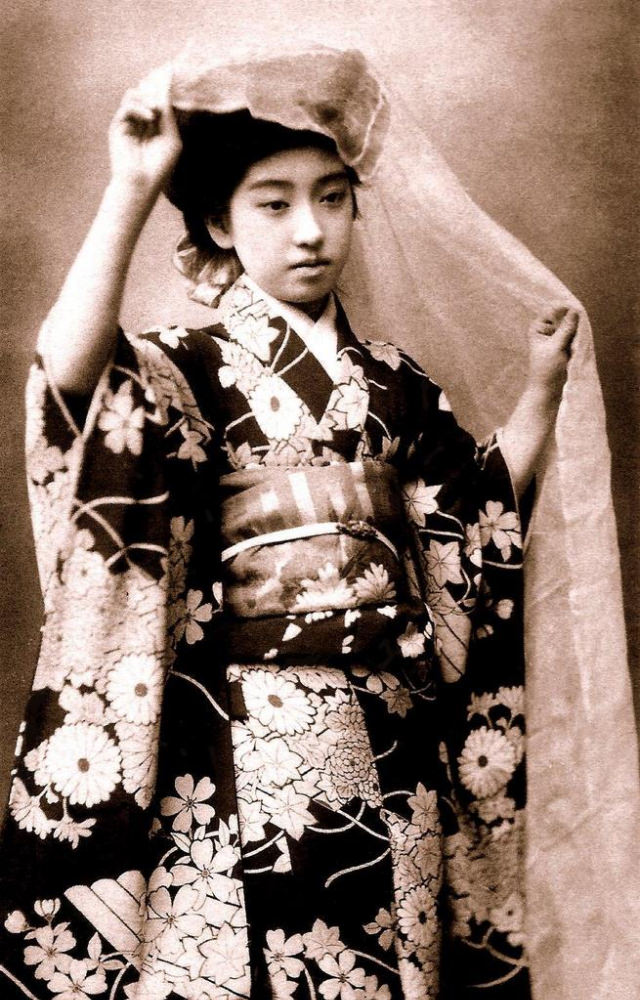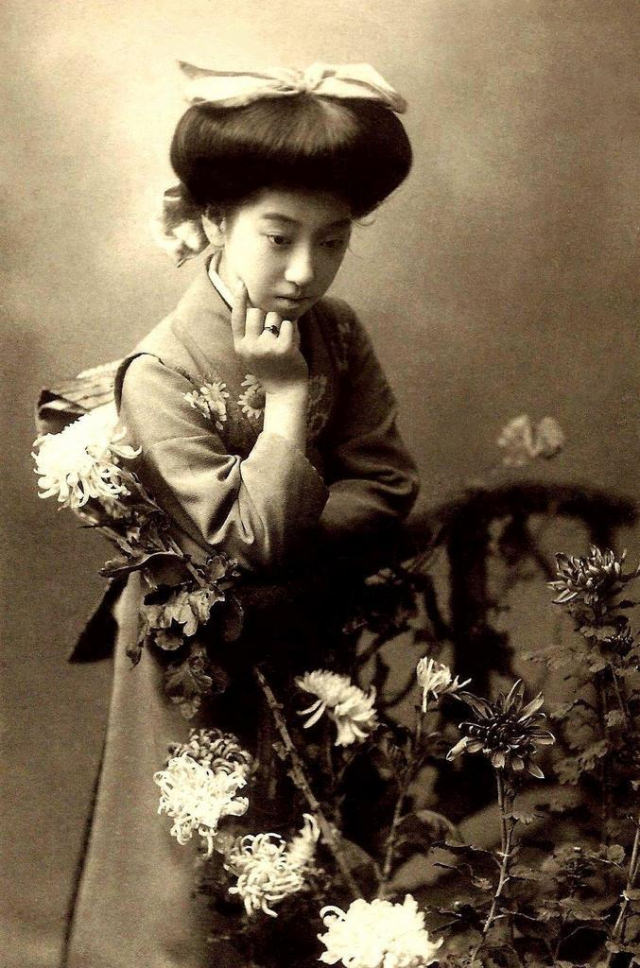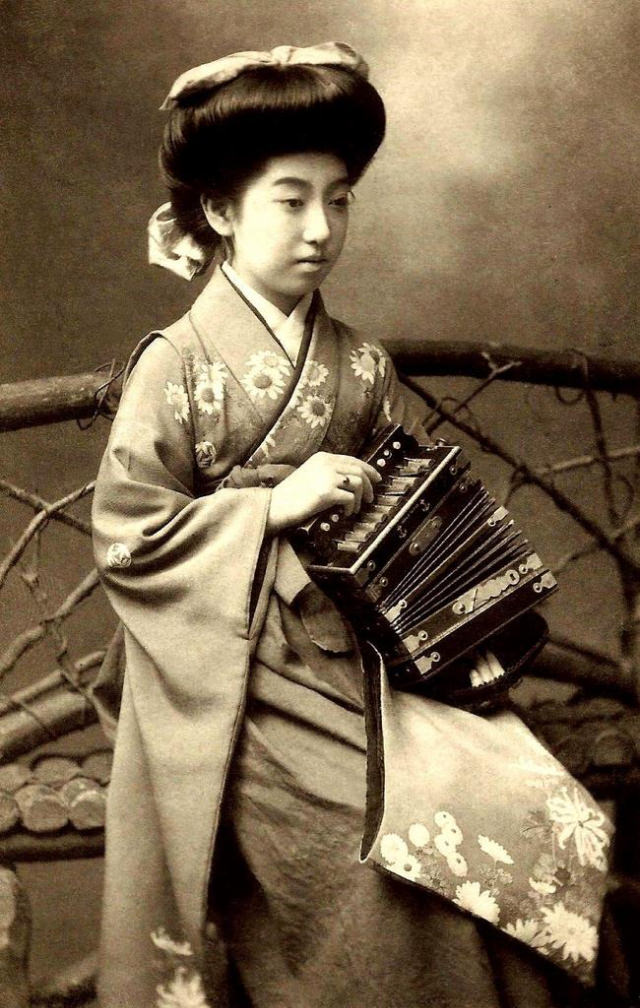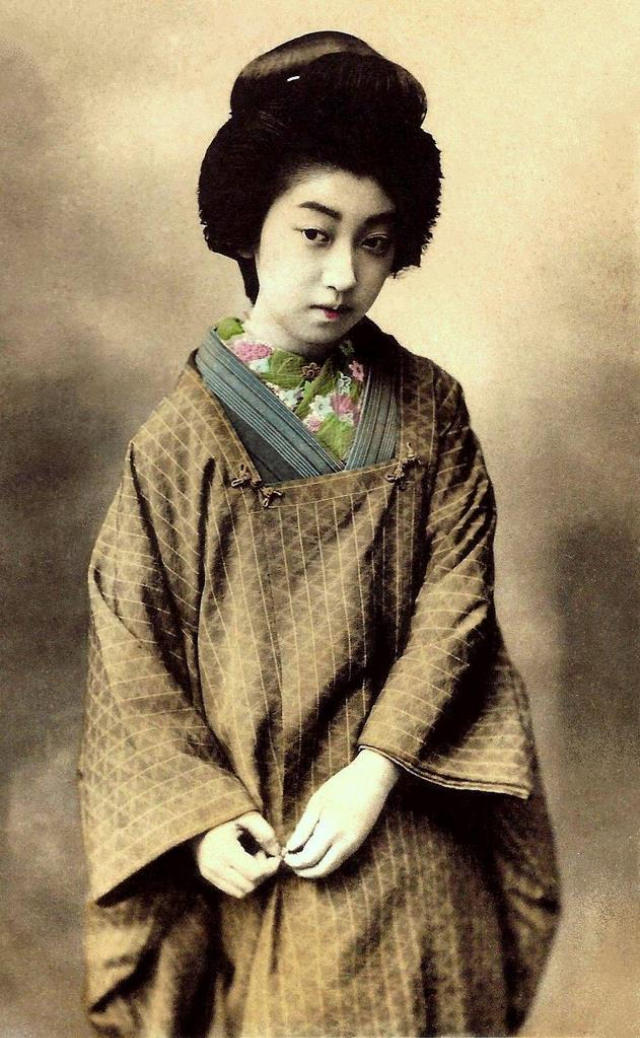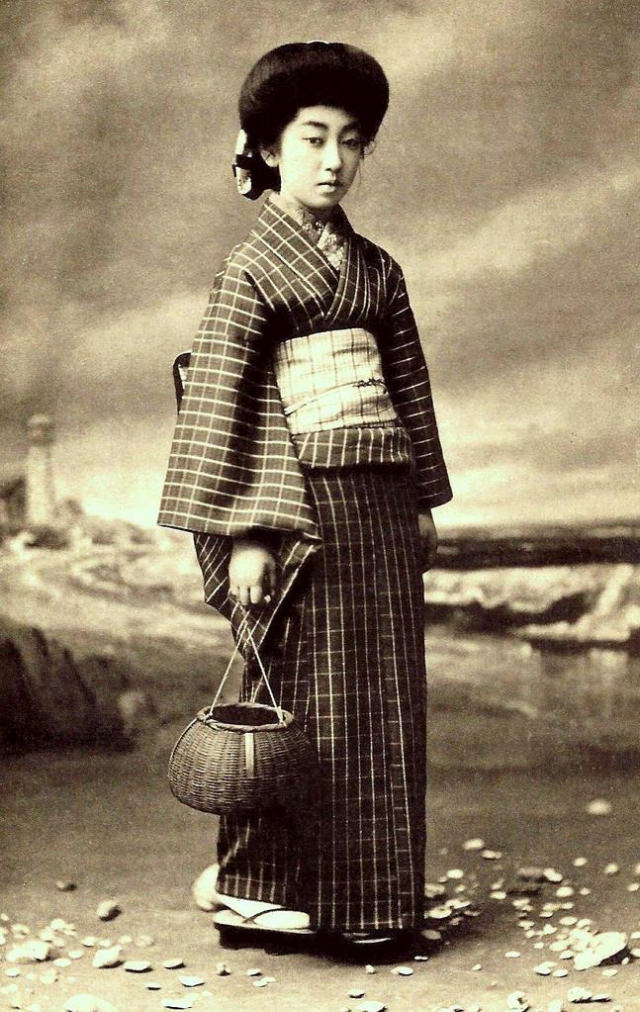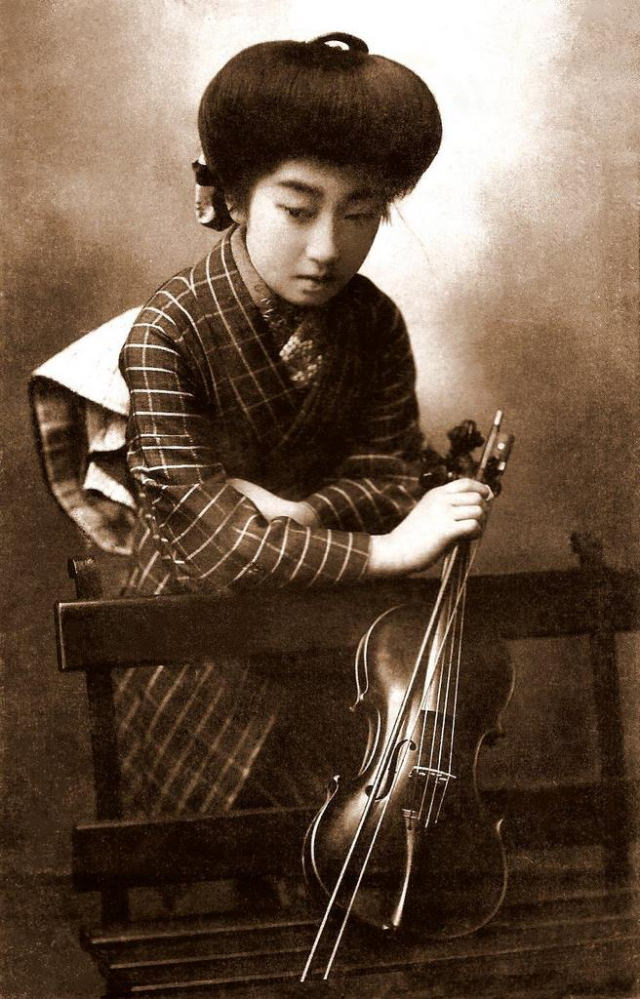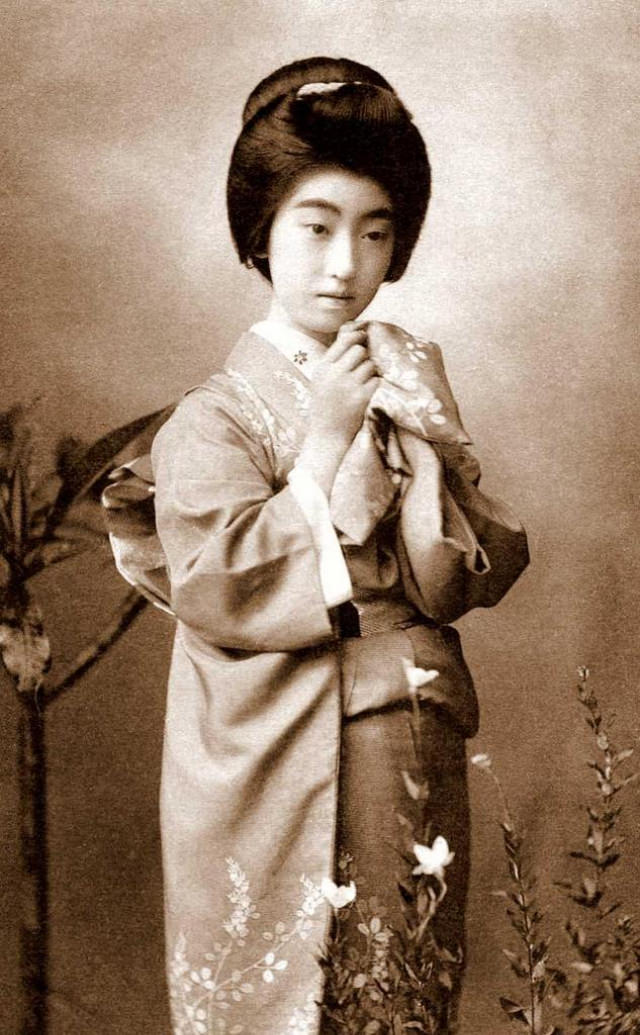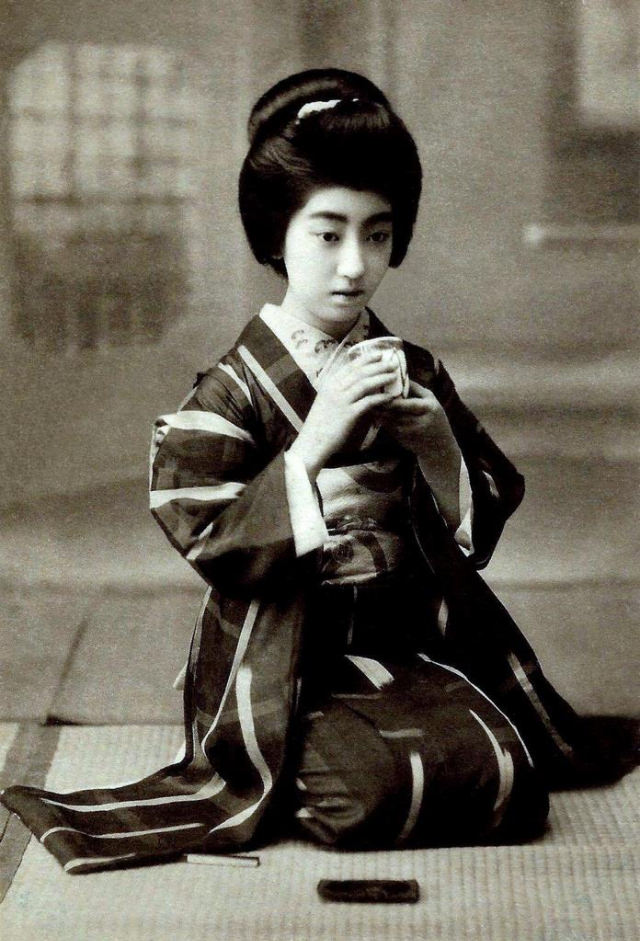Chishō Takaoka was a geisha who became a Buddhist nun later in life. Chiyoha or Teruha was her stage name, but her real name was Tatsuko Takaoka. She became famous for her radiant beauty and for cutting off one of her fingers for her lover. She was a popular model on postcards and was known as the “Nine-Fingered Geisha.” She was also the inspiration for Jakucho Setouchi’s novel, Jotoku.
Chishō was born in 1896 in Nara Prefecture, but her parents registered her birth at Osaka City Hall. Her mother, Oda Tsuru, died when she was two years old. Some theories speculate that Tsuru fled her home. Her grandmother raised Chishō, and when she was seven, she began working in her aunt’s tea parlor as a waitress. When she was 12 years old, her father sold her into slavery, sending her to Oume Tsujii, the courtesan of kabuki actor Onoe Kikugorō V. At 14, Chishō was adopted by Kagaya as his daughter and debuted as Chiyoha. As a result of her unusual beauty, she became popular, and her mizuage was bought by a chairperson of a Ōsaka stock exchange transaction.
She became emotionally involved with Otomine, a famous playboy and upscale clothes dealer in Higashi ward when she was 15 years old. She eloped with him to Beppu Onsen. Otomine broke up with her after finding a picture of a kabuki actor in her hand mirror. She cut off her pinky with a razor and gave it to Otomine as a sign of her fidelity to him. During his arthritis treatment, he was said to have proposed love suicide to her when he was at the Beppu spa, but she refused. After that, she gave her finger to appeal for his love. She was unable to remain in Osaka after the scandal, and she was taken under the care of Kiyoka, a geisha in Tokyo who was the mistress of Lord Taketarō Gōtō. During her tenure in Kōfuen, Mukōjima, and Kiyoka, she took on 3,000 yen in debt. She learned her younger brother had been burned to death in a fire the day before her debut. She was initially a quiet geisha in the zashiki parlor, so when she was hit by the shock of separation from Otomine and the news of her brother’s death, she had cut off her finger. She soon became a sought-after geisha after many men saw her. She sold many picture cards of herself, and they were a commercial commodity. Additionally, some men illegally copied and sold them, and Chishō accused them of infringement.
As a geisha, she was modest and had an academic goal. Through reading many books, she learned kanji and later became a writer. The market player of Kitahama and runner for a motion picture company, Chishō married Suezo Oda in 1919. They traveled across the United States together. While studying English for eight months, she lived in a dormitory at a girls’ school. Upon returning home, her behavior in the U.S. led to tensions in her marriage. She attempted suicide twice, and they divorced.
She worked as a geisha after returning home. Under the name Teruha Oda, she starred in Shiro Nakagawa’s 1923 film Ai no tobira (The Gate of Love). Later, she remarried and ran a bar in Osaka with a medical doctor. Her first autobiography, titled Teruha Zange, was published in 1928. She became a Buddhist priest in Temple Kume at 39 years old, referring to herself as Chisho. She went to Giōji in Kyoto, which had been ruined, and rebuilt it. It became a refuge for wounded women. Chishō died at the age of 98 on 22 October 1994.
Below are some stunning photos of Chishō Takaoka from her life.


